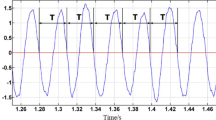Abstract
Tool wear monitoring is very important for economical reasons. In this paper a new and very economical solution is presented. The idea is to use easily available microcontroller based hardware, which is very cheap due to mass production. The cheap hardware is combined together with sophisticated software. The use of regression analysis techniques together with fuzzy logic makes the system self adaptive, i.e., the system can monitor new tools automatically after a short learning period. The automatic learning period typically only lasts in the order of 5% of the total tool life time of an individual tool and thus makes the introduction of the method really simple and effective. The article focuses on the introduction and use of microcontroller based hardware but also covers and summarizes the principles behind the new approach which makes it possible to use hardware with limited capability. A more detailed description of the physical and mathematical background can be found in the given references. The proposed approach is tested with data from drilling tests.
Similar content being viewed by others
References
Byrne G., Dornfeld D., Inasaki I., Ketteler G., König W., Teti R. (1995) Tool condition monitoring (TCM)—the status of research and industrial application. Annals of the CIRP 44(2): 541–567
Cook N.H. (1980) Tool wear sensors. Wear 62: 49–57
Dimla Jr.D.E., Lister P.M., Leighton N.J. (1997) Neural network solutions to the tool condition monitoring problem in metal cutting—a critical review of methods. International Journal of Machine Tools & Manufacture 37(9): 1219–1241
Holmberg, K. (1991). Tribological bases for accelerated testing. In K. Holmberg & A. Folkeson (Eds.), Operational reliability and systematic maintenance. Elsevier Applied Science, ISBN 1-85166-612-5.
Jantunen, E. (2001). A short list of some tool wear monitoring related references from the late 20th and early 21st Century, Report AVAL73-011048, Espoo.
Jantunen E. (2002) A summary of methods applied to tool condition monitoring in drilling. International Journal of Machine Tools & Manufacture 42: 997–1010
Jantunen, E. (2003). Prognosis of wear progress based on regression analysis of condition monitoring parameters. In Proceedings of the 16th International Congress of COMADEM, Sweden (pp. 481–491), ISBN 91-7636-376-7.
Jantunen, E. (2006).Diagnosis of tool wear based on regression analysis and fuzzy logic. IMA Journal of Management Mathematics, 17(1), 47–60. ISSN 1471–6798.
Jantunen E., Jokinen H. (1996) Automated on-line diagnosis of cutting tool condition. International Journal of Flexible Automation and Integrated Manufacturing 4(3&4): 273–287
Jantunen, E., & Poikonen, A. (1993). Dynamics in monitoring gear faults. In Proceedings of the 47th Meeting of Mechanical Failures Prevention Group, Virginia Beach, Virginia, USA.
Li D., Mathew J. (1990) Tool wear and failure monitoring technique for turning—a review. International Journal of Machine Tools & Manufacture 30(4): 579–598
Lin S.C., Ting C.J. (1995) Tool wear monitoring in drilling using force signals. Wear 180(1–2): 53–60
Milton, J. S., & Arnold, J. C. (1995). Introduction to probability and statistics, principles and applications for engineering and the computing sciences, McGraw-Hill, 3rd ed., ISBN 0-07-042623-6.
Onsoyen, E. (1991). Accelerated testing of components exposed to wear. In K. Holmberg & A. Folkeson (Eds.), Operational reliability and systematic maintenance. Elsevier Applied Science, ISBN 1-85166-612-5.
Rao, V. B., & Rao, H. V. (1993). C++ neural networks and fuzzy logic. Management Information Source, Inc., ISBN 1-55828-298-x.
Rehorn A.G., Jiang J., Orban P.E. (2005) State-of-the-art methods and results in tool condition monitoring: A review. International Journal of Advanced Manufacturing Technology 26: 693–710
Teti R. (1995) A review of tool condition monitoring literature database. Annals of the CIRP 44(2): 659–666
Thangaraj A., Wright P.K. (1988) Computer-assisted prediction of drill-failure using in-process measurements of thrust force. Journal of Engineering for Industry, Transactions of the ASME 110: 192–200
Tlusty J., Andrews G.C. (1983) A critical review of sensors for unmanned machining. Annals of the CIRP 32(2): 563–572
Author information
Authors and Affiliations
Corresponding author
Rights and permissions
About this article
Cite this article
Jantunen, E., Vaajoensuu, E. Self adaptive diagnosis of tool wear with a microcontroller. J Intell Manuf 21, 223–230 (2010). https://doi.org/10.1007/s10845-008-0195-0
Accepted:
Published:
Issue Date:
DOI: https://doi.org/10.1007/s10845-008-0195-0




